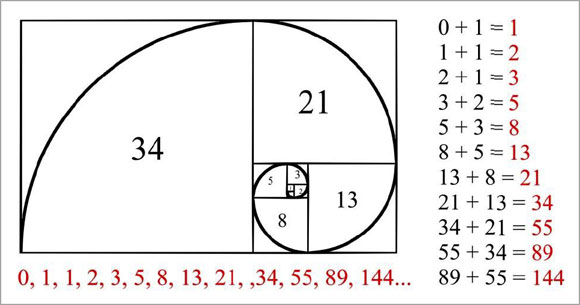-
Like paranormal and time travel?
You are using an out of date browser. It may not display this or other websites correctly.
You should upgrade or use an alternative browser.Captain Leale Martelli - The Odyssey in the Realms of Time
- Thread starter steve69
- Start date
MartinTower
Active Member
It seems the number twelve is quite often in this story told by LD...
12 tones, 12 colors..
Chromatic scale - WikipediaThe chromatic scale is a musical scale with twelve pitches, each a semitone above or below its adjacent pitches. As a result, in 12-tone equal temperament (the most common temperament in Western music), the chromatic scale covers all 12 of the available pitches. Thus, there is only one chromatic scale.
Colorfulness - WikipediaChroma is the "colorfulness of an area judged as a proportion of the brightness of a similarly illuminated area that appears white or highly transmitting".[3][2] A note accompanying this definition in effect implies that an object with a given spectral reflectance exhibits approximately constant chroma for all levels of illumination, unless the brightness is very high. Thus if a uniformly colored object is unevenly lit, it will generally exhibit greater colorfulness where it is most strongly lit, but will be perceived to have the same chroma over its entire surface. While colorfulness is an attribute of the color of the light reflected from different parts of the object, chroma is an attribute of the color seen as belonging to the object itself (called an object color[4]),and describes how different from a grey of the same lightness such an object color appears to be.[5]MartinTower
Active Member
3+3+6...
Color wheel - WikipediaMost color wheels are based on three primary colors, three secondary colors, and the six intermediates formed by mixing a primary with a secondary, known as tertiary colors, for a total of 12 main divisions; some add more intermediates, for 24 named colors. Other color wheels, however, are based on the four opponent colors, and may have four or eight main colors.
Goethe's Theory of Colours provided the first systematic study of the physiological effects of color (1810). His observations on the effect of opposed colors led him to a symmetric arrangement of his color wheel anticipating Ewald Hering's opponent color theory (1872).
...for the colours diametrically opposed to each other... are those that reciprocally evoke each other in the eye.
— Goethe, Theory of Colours

Goethe's symmetric color wheel with 'reciprocally evoked colours
It is just amazing it looks like the colors of the paintings in the church, they circulate like that! Dot dot dotMartinTower
Active Member
Thank you, i didn't know the connection to Tesla. Just noticing now how 12 notes plus 1 (reaching octave so 8) is 13.
And here a photo of our neighbourhood.
And on V. F... interesting similarities, the research of nightmares...like dylan dog..notice the grey tones.. V. F as a total robot, not being half belonging to a religious order/human ?

When you look into the abyss without a religious order the abyss looks back at you. I like colors.Last edited:Damn it, there is no "translate button"
 ..
..
I like the number 9..It is the ONLY number where everytime you multiply it, it will always add back to the number nine..
For example..9 times 9 equals 81, 8 plus 1=9......9x7=63...6 plus 3=9..ad infinitum ..
..MartinTower
Active Member
It says V.F. was like Cemetery Man - Wikipedia, the cemetery like war shadows killed him at the highest point of his career..It says V.F. was like Cemetery Man - Wikipedia, the cemetery like war shadows killed him at the highest point of his career..
Thanks
BTW, i love the smell of Iodine, but i would never consider drinking it!
 ..
..MartinTower
Active Member
Etodolac - Wikipedia this? Maybe Steve 69 drank it, some shadow made him drink it and dead he was. One more shadow to add to the cemetery archive.MartinTower
Active Member
Tourist said our soul has a specific weight, specific to a certain solar system. The atomic weight here is based on carbon-12.
p = 6
n = 6
e = 6
Tourist asked, why black shadows? Because they are stuck in hell, this world is made by the real Devil.
Souls try to reach the sky by losing weight. Faith and magic.
Sonnet 27 - WikipediaSonnet 27 is part of the Fair Youth sequence. It is the beginning of a series of five sonnets (27 to 31), in which the subject of the sonnet is the act of meditating on the poet’s friend, or love interest; the first two, Sonnets 27 and 28, consider night and sleeplessness — traditional topics in Petrarchan sonnet sequences.
Weary with toil, I haste me to my bed,
The dear repose for limbs with travel tired;
But then begins a journey in my head,
To work my mind, when body’s work’s expired:
For then my thoughts, from far where I abide,
Intend a zealous pilgrimage to thee,
And keep my drooping eyelids open wide,
Looking on darkness which the blind do see:
Save that my soul’s imaginary sight
Presents thy shadow to my sightless view,
Which, like a jewel hung in ghastly night,
Makes black night beauteous and her old face new.
Lo, thus, by day my limbs, by night my mind,
For thee and for myself no quiet find.How can I then return in happy plight,
That am debarr’d the benefit of rest?
When day’s oppression is not eas’d by night,
But day by night, and night by day, oppress’d?
And each, though enemies to either’s reign,
Do in consent shake hands to torture me;
The one by toil, the other to complain
How far I toil, still farther off from thee.
I tell the day, to please him thou art bright,
And dost him grace when clouds do blot the heaven:
So flatter I the swart-complexion’d night
When sparkling stars twire not thou gild’st the even.
But day doth daily draw my sorrows longer,
And night doth nightly make grief’s strength seem stronger.
-
This site uses cookies to help personalise content, tailor your experience and to keep you logged in if you register.
By continuing to use this site, you are consenting to our use of cookies.


